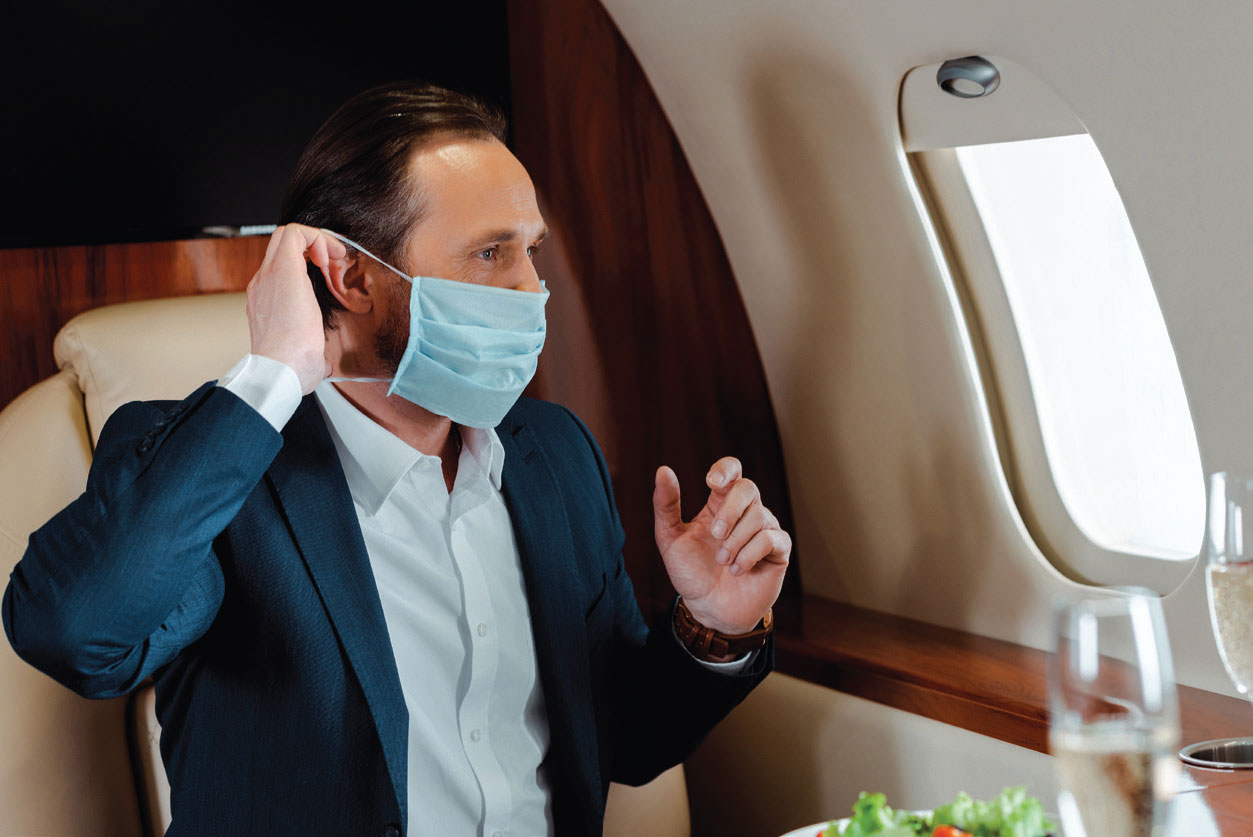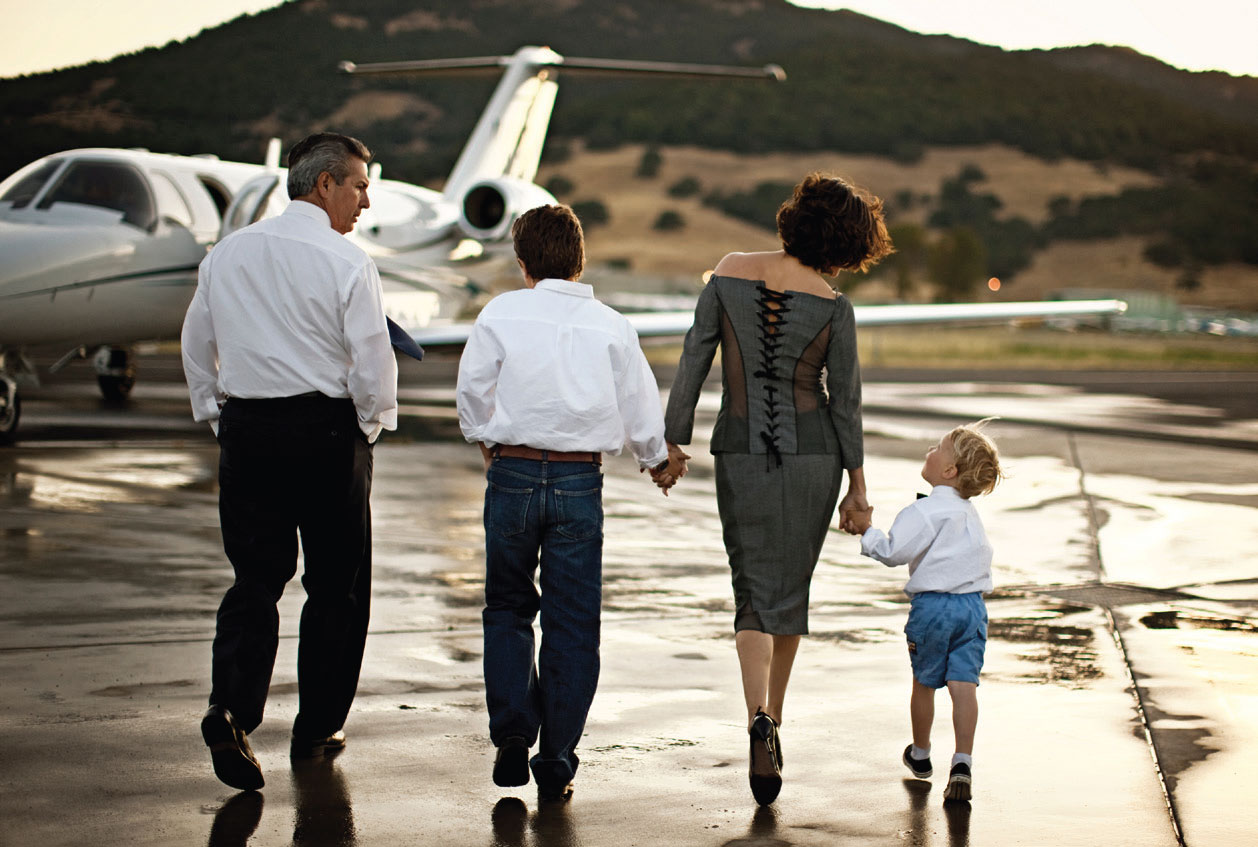When global borders closed in 2020, international business quickly became comfortable with life online. Remote meetings became the order of the day, and bosses even ‘visited’ factories and fi red workers via Zoom. But now that the pandemic is receding, will executives return to their jet-setting lifestyle – or do the experiences of the last few years presage a broader shift in how business is done? Elly Earls talks to Eva Satkute Stewart, global sector head of travel and tourism at YouGov; Paul Tuohy, CEO of The Campaign for Better Transport; and Adrian Leach, CEO at World Travel Protection, a member of Zurich Insurance, to learn more.

Pre-pandemic was a golden age for corporate travel. It was standard for executives to fly frequently, whether to visit colleagues, attend industry events or meet with key clients. Face-toface meetings were the norm in most organisations, and while the technology existed to make virtual meetings successful, it wasn’t widely employed. The result was that flying a relatively short distance for a one-hour meeting was considered the norm across many companies.
In 2019, in fact, business travel reached its highest point ever. The estimated total business travel spend for the largest 100 corporate travel programmes exceeded $11bn, which shakes down to around $110m per company. And while frequent flyers – mostly business flyers – make up less than 1% of the world’s population, they accounted for more than half of global aviation emissions. Today, things are very different. Years of consistent growth were abruptly halted by Covid-19.
According to one recent McKinsey report, total global business travel expenses contracted by 52% in 2020, while managed corporate travel spending in the US plummeted 71% – the equivalent of $94bn.
Even when vaccination programmes got up and running, and government restrictions eased, senior executives did not rush away from their computer screens. “In 2021, YouGov polled more than 1,400 European business travellers, and found that 42% would fly less often even after Covid-19 restrictions are lifted,” explains Eva Satkute Stewart, global sector head of travel and tourism at YouGov. “This was partly due to concerns around travel restrictions and health risks, and partly to senior executives’ diminished desire to go back to intense travel schedules.”
Paul Tuohy agrees. “Businesses and employees adapted very quickly and working practices changed literally overnight,” explains Tuohy, CEO of the Campaign for Better Transport, a UK charity that campaigns for affordable green transport. “Initial fears that business would stop proved to be unfounded, and we discovered that it is possible to fly less and still get business done. In-person meetings gave way to virtual ones and we realised that all that time we’d previously spent travelling could actually be used more productively: working.” Unsurprisingly, this revolution in how business was done also saw aviation emissions take a nosedive. During the peak of the pandemic in 2020, they fell by 61%, proving, argues Tuohy, that the only way currently to reduce carbon emissions from aviation is to fly less.
Tightening the purse strings
Adrian Leach is at the centre of these changes. He’s the CEO of World Travel Protection, part of Cover- More Group, which in turn was acquired by Zurich Insurance in 2017. That move positioned Zurich as a top-three global travel insurance provider – and gave Leach an ideal view into shifting corporate trends.

Covid-19 caused a major rethink of the value and purpose of business travel in general.
The executive explains that while some aspects of corporate travel, such as sales meetings and technical leadership in industries like manufacturing and energy have barely slowed down, the pandemic has certainly led to some deep innovations in travel policies. “In many instances,” he says, “there needs to be real economic benefit for travel to be approved. And after two years with significantly reduced travel spend, many CFOs wish to maintain this.”
Cover-More Group has reduced its spend on travel by 70%, with a positive adoption of virtual meetings. “This enables the global employee base to connect quickly while maintaining the focus on reducing our global emissions,” Leach explains. “However, travel remains an essential tool to operating the business. As an example, a group will now come together once a year with virtual follow-ups on a project that previously may have involved several global trips. Client-facing travel also remains in place to ensure relationships are developed.”
Stewart, for her part, argues that with inflation and the cost of travel continuing to rise, it is likely that even more scrutiny will be placed on all corporate travel expenditures – and in the short term only senior executives will travel.
Cost vs carbon
Not that cost is not the only reason corporate travel has slumped. Speak to the experts and it’s clear that sustainability is important too. As Stewart puts it: “Less travelling for business looks better on a balance sheet while reduced carbon footprint-per-employee looks good in ESG reports.”
Tuohy makes a similar point. “Businesses are definitely wanting to address their impact on the planet and reducing emissions is part of this drive to be more sustainable – but flying less is also cheaper for companies and that’s often a more important consideration.”
Stewart characterises the current discussion as ‘cost vs carbon’. “Corporate travel managers are concerned with increased accommodation, flight, and car rental costs,” she says. “As such, a vast majority of bookings exceed the set limits defined in corporate travel policies and many sustainable options still come at a premium.”
For Tuohy, this is a big worry. “At the moment, we are seeing far too many pricing incentives towards aviation, which is making the switch to train instead of plane, for example, harder to sell,” he notes. This, he adds, is despite the fact that rail is faster and greener than flights.

Excessive business travel means time away from home, which can put strain on home and family life.
Nor is this a mere hypothetical. To prove his point, Tuohy recently ‘raced’ a colleague from London to Glasgow. He flew, while his opponent took the train. And as Tuohy says, the competition resulted in a clear winner. Apart from emitting a seventh of the greenhouse gases, Tuohy’s rival also got more work done – even if Tuohy did ultimately beat him by a whole two minutes.
It’s unsurprising, at any rate, that Tuohy would like to see UK businesses leading the way in reducing emissions from aviation. “Many UK companies have already announced targets to cut corporate flying by half, but we’d like to see far more commitment to flying less and taking the train more,” he says. “By reducing corporate travel by 50% by 2030, we would cut European emissions by 32.6 MtCO2, which is the same as taking 16 million polluting cars off the roads. We also want large companies and government departments to implement a policy of rail by default for domestic business travel, where the train journey is under five hours.”
Mental health impacts
While we are certainly seeing a concerted shift away from pre-pandemic levels of travel, there is still a widespread view among senior leadership that face-to-face meetings are vital to understanding clients better and driving business, and that regional and international travel remains critical to their job success.
Leach, for his part, is adamant. “For businesses that have more than one location, or people spread across multiple locations, you still need to connect with them,” he says. “Virtual technology is an excellent supplement but if you want to set the culture of a business and remain focused on your customers, there needs to be an adequate amount of in-person engagement with employees and customers.
Connection and collaboration will need a certain amount of in-person commitment from organisations.” All the same, executives are keen not to lose the benefits to their work-life balance they have seen in the last couple of years. A recent study by Collinson found that 35% of business travellers had concerns about the impact of travel on their mental health, with some even admitting to giving false reasons to avoid having to travel for work. “While travel comes with many benefits,” says Stewart, “it is also time away from home and family, which could put additional pressures on social and family life.”
In the short term, then, Leach believes the focus needs to be on managing the executive travel that does happen effectively – and ensuring that more virtual engagement doesn’t end up having the opposite effect intended when it comes to mental health. There are other challenges too. When it comes to Leach’s own travel over the past six months, the biggest difficulty has been a lack of flights and hotel rooms. “The whole industry is trying to get resources back in place, but it’s not a quick process,” he explains. “There are still a lot of assets underutilised due to the shortage in staff across the whole travel industry. This challenge will be with us for at least another 12 months.”
As Leach argues, these travel impacts mean planning needs to be forecast further out than before the pandemic, while there also needs to be a plan in place for what happens when things go wrong, or delays occur. It’s essential, he says, to understand the impact of these mishaps to an executive’s diary, how that flows on to business operations – and the impact on their personal life too.
Stewart agrees, suggesting that corporate policies will evolve to enable more enjoyable travel for executives. “We are already seeing a greater demand for business and premium seats on planes, more upscale airport lounges, more demand for stylish service apartments, and perhaps most importantly – convenience and flexibility for all bookings.”
In short, Leach believes the situation will continue to evolve over the next two years, depending on the industry in question. “I expect you will see larger one-off trips and collaboration type conferences to set the tone in a business with follow-up virtual meetings to support the vision of the organisation,” he speculates. “Client interface meetings will continue and be largely dictated by the clients’ needs and the competitive nature of the industry. Technical professionals will continue to travel where virtual technologies are not appropriate.”
Of course, there is a danger that now we can all travel again, we will, and that we will start to see corporate travel rising once more. Tuohy sums up by emphasising that this would not only be bad news for the planet – but also for companies.
“While I think it’s unlikely we’ll see corporate travel make a complete return to pre-pandemic levels, especially when the financial and productivity benefits of less travel have been proved, even a small increase on current levels will be detrimental to the environment and ensure that we have to deal with more extreme heat waves, longer droughts and even more unpredictable weather.” It goes without saying that all this would make business more difficult, wherever in the world an executive happens to be.


